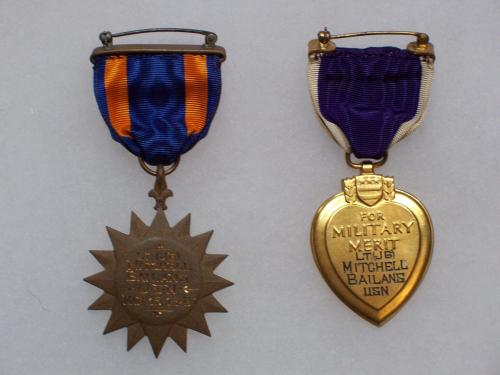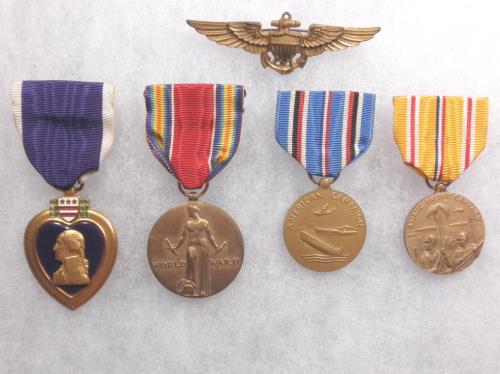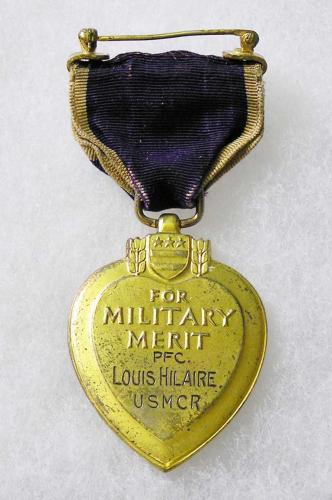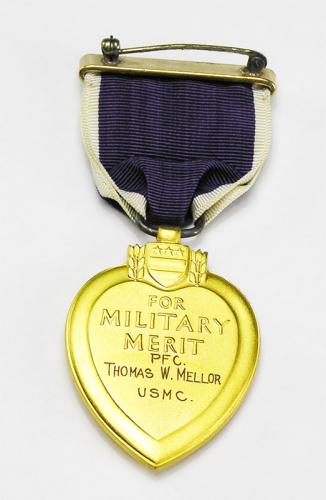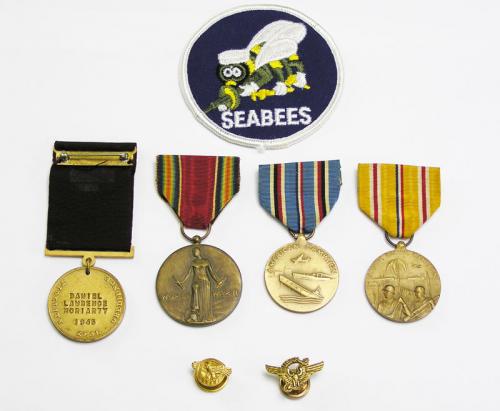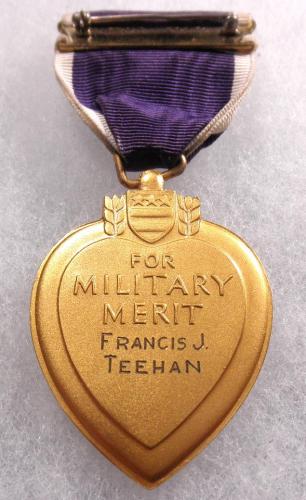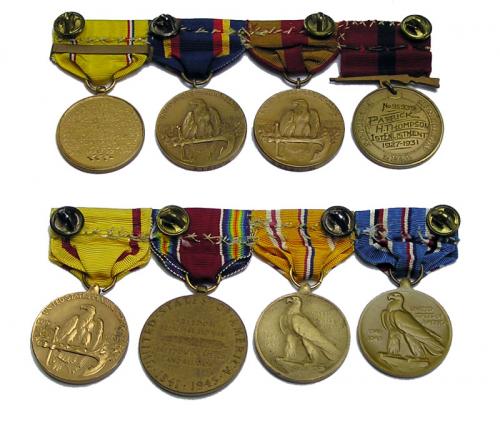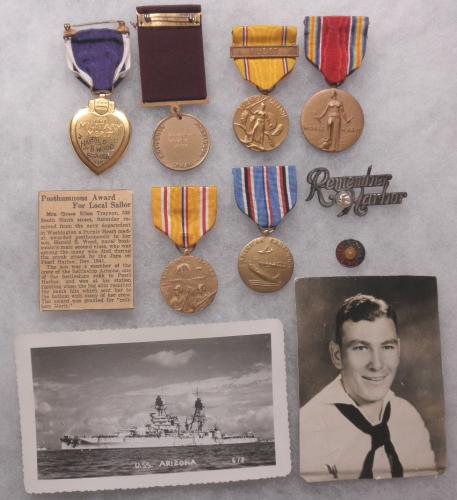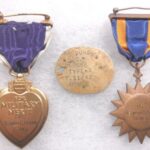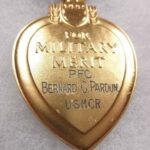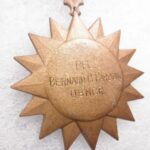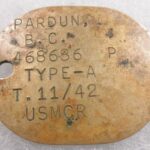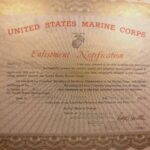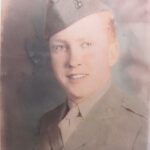PFC Bernard Pardun was a turret gunner on a TBF-1C piloted by 1st Lt. James W. Boyden, flying in plane number 102, BUNO 24264. Also killed was PFC Arthur J. Patrickus, the radio gunner. On that date, three groups of 8 TBF's each took off for a night mission to lay mines in Simpson Harbor, Rabaul, New Britain. Pardun's plane was in the third group that lost 3 planes.
PFC Pardun's group includes his officially engraved posthumous Type 1 split brooch Purple Heart and officially engraved solid brooch Air Medal, together with his thumbprint 11/42 dated dogtag. Also included is his USMC "Enlistment Notification" showing his enlistment date of October 22, 1942 in Indianapolis, Indiana, and a note from his brother showing he was from Dowagiac, Michigan.
Here is the story of that mission as taken from USMC Captain John Foster's book "Hell in the Heavens", published in 1961, on pages 239 and 240:
"Somebody back in Washington, DC, had the bright idea to sow some mines in Simpson Harbor at Rabul with the purpose of impeding Jap shipping by their nuisance value. Consequently, orders were received at Bougainville. One torpedo bomber squadron was assigned the mission, but when the time came, another was given the hop, because they had previous experience in laying mines.
At the briefing they were told 'Make it good, because Washington has its eye on us tonight.'
In the dark hours of February 14, 1944, the topedo bombers of VMTB 233 and Major Ronald F. Smith's VMTB 232 took off on the operation that was to result in tragedy for 233.
The Commanding Officer of VMTB 233, Major Coin, found the Japs unusually interested in what was happening that night. For several previous nights the bombers had followed the prescribed route and altitude to drop their bombs, and the Japs were able to predict where the Americans would fly.
The TBM's were to fly up in three groups of eight each. The first group lost one plane. As they headed back home the C.O. tried to radio the other TBF's to warn them to turn back but he couldn't make radio contact. The second group lost two planes. Before the third group arrived at its assigned interval of nearly an hour, the B-24 which had been harassing Rabaul to distract the attention of the Japs was shot down.
The third group of planes found every searchlight and AA gun in the area pointed their way when they flew 800 feet over the water at the slow speed of 160 knots to drop their parachute-mines weighing 1600 pounds apiece. Plane after plane disintegrated in mid-air and fell in flames. Only three of them got away. One pilot failed to be in the correct location on his first pass and had the nerve to turn around and go back to do it. He had the luck to escape.
And the next night the Army wanted them to go up again! One of the majors was ready to give up his wings and his commission rather than have his boys try it again. There was such a stink that the high command thought it wise to drop the affair.
My good friend and former roommate of cadet days, Cornelius, never came back from that mission. A total of six planes and eighteen men were senselessly lost that night."
Four crewmembers from that mission were captured by the Japanese and subsequently executed.
